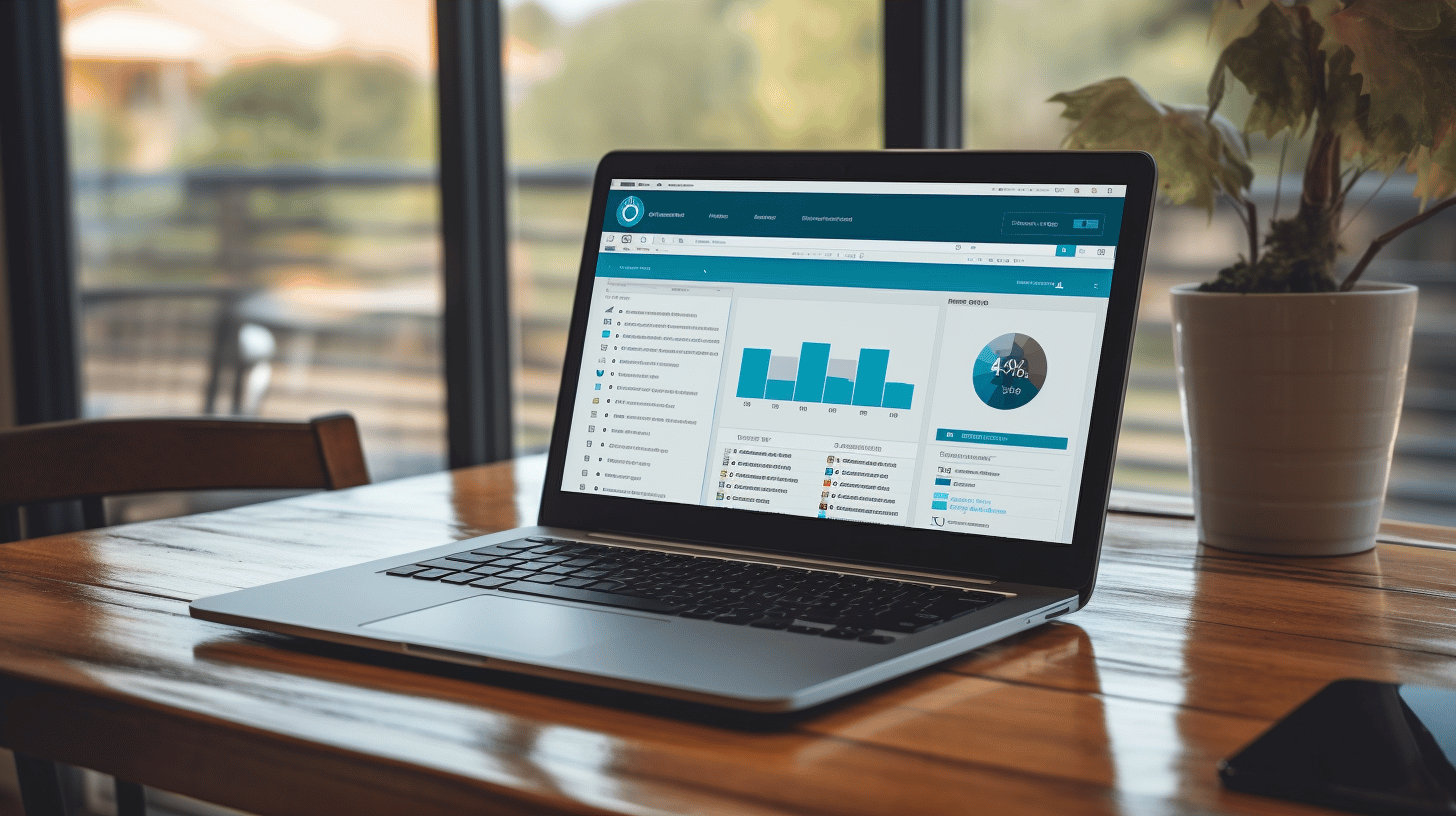在不斷發展的網站開發領域,速度是決定網站成功的關鍵因素。當今的用戶希望網站能夠快速加載,並且搜尋引擎在排名中優先考慮加載速度快的網站。對於 WordPress 網站來說,實現最佳網站速度可能是一個挑戰,因為該平台嚴重依賴外掛程式。
不過,別擔心!本文旨在為您提供寶貴的建議,以便透過使用強大的外掛程式來提高您的 WordPress 網站速度。我們將探索 WordPress 的流行程度,討論快取外掛的好處,深入研究圖像優化技術,並重點介紹 2023 年外掛程式領域的新興趨勢。
閱讀本文後,您將對增強您的 WordPress 網站並確保無縫的用戶體驗的最佳實踐和工具有深入的了解。那麼,讓我們深入研究並釋放您網站速度的潛力! ✨
WordPress 的流行
全球有超過 40% 的網站使用 WordPress 構建,顯示其被廣泛採用且需要優化。數以百萬計的網站依賴這個強大的內容管理系統,因此確保您的 WordPress 網站在競爭中脫穎而出至關重要。
從個人部落格到電子商務商店和公司網站,WordPress 提供了一個滿足廣泛需求的多功能平台。其用戶友好的介面、可自訂的主題和廣泛的插件目錄使其成為企業和個人的首選。
但如此廣泛的使用帶來了在眾多 WordPress 網站中脫穎而出的挑戰。搜尋引擎優化 (SEO) 在提高您網站的知名度和推動自然流量方面發揮著至關重要的作用。透過優化您的 WordPress 網站,您可以提高其效能,吸引更多訪客,並最終實現您的線上目標。
在本文中,我們將探討優化 WordPress 網站以獲得更好的搜尋引擎排名的各個方面。從技術優化到內容策略和使用者體驗增強,我們將涵蓋所有內容。因此,無論您是經驗豐富的 WordPress 用戶還是剛開始使用,都請準備好充分發揮您網站的潛力。
但首先,讓我們先了解為什麼優化您的 WordPress 網站如此重要。以下是一些主要優點:
- 提高搜尋引擎排名:透過實施有效的 SEO 策略,您可以提高網站在搜尋引擎結果頁面上的可見性,從而增加自然流量。
- 增強使用者體驗:優化良好的網站不僅排名更高,還能提供更好的使用者體驗。這會降低跳出率,延長用戶在網站上停留的時間,並提高轉換率。
- 提高網站速度:圖片壓縮、快取和縮小等優化技術可以顯著提高網站的載入速度。這不僅可以提高用戶體驗,而且有助於提高搜尋引擎排名。
- 行動友善:隨著行動用戶數量的不斷增長,擁有一個適合行動裝置的網站至關重要。優化您的 WordPress 網站可確保它響應迅速並在所有裝置上正確顯示,從而改善用戶體驗和 SEO。
- 更高的轉換率:透過優化網站的佈局、導覽和號召性用語,您可以建立無縫的使用者旅程,鼓勵訪客採取行動,例如進行購買或填寫表單。
隨著我們深入研究 WordPress 優化領域,我們將更詳細地探討這些好處,並提供可行的建議來幫助您提高網站的效能。因此,無論您是希望獲得更多自然流量、改善用戶體驗還是提高轉換率,請繼續關注未來的寶貴見解。
記住, Managed-WP 上的 WordPress 可以幫助您充分利用您的 WordPress 網站。造訪他們的網站,了解一系列旨在優化您網站效能的託管 WordPress 託管解決方案。憑藉他們的專業知識和支持,您可以將您的 WordPress 網站提升到一個新的水平。 Managed-WP 上的 WordPress
快取插件的好處
在當今快節奏的數位世界中,網站速度已成為吸引和留住訪客的關鍵因素。載入緩慢的網站不僅會讓用戶感到沮喪,而且可能失去潛在客戶。這時快取外掛就可以發揮作用了。透過利用快取插件,網站所有者可以優化其網站的效能並為用戶提供無縫體驗。讓我們探討一下使用快取插件的一些主要好處:
使用者體驗增強
- 閃電般的載入時間: 快取插件的主要優點之一是它們能夠顯著減少載入時間。當使用者造訪網站時,快取外掛程式會將頁面的靜態版本儲存在快取中。這意味著後續存取將檢索儲存的版本,無需從頭開始產生頁面。因此,使用者可以體驗到閃電般的載入時間,從而增強他們的整體瀏覽體驗。
- 減少伺服器負載: 快取插件也有助於減輕伺服器負載。無需為每個使用者請求重複產生動態頁面,而是提供快取版本,從而減少伺服器資源的壓力。這可以提高網站的效能和穩定性,確保網站可以處理高流量而不會變慢或崩潰。
- 改善行動體驗: 隨著行動裝置的日益普及,優化網站以適應行動裝置的使用變得至關重要。快取插件透過減少需要傳輸的資料量在改善行動體驗方面發揮著至關重要的作用。快取的頁面減少了頻寬要求,從而縮短了載入時間,降低了資料使用量,並為行動用戶帶來了更流暢的瀏覽體驗。
SEO 排名提升
- 更快的頁面索引: 搜尋引擎優先考慮提供快速、無縫用戶體驗的網站。快取外掛程式可以透過向搜尋引擎機器人即時提供快取的頁面來幫助加快頁面索引速度。因此,搜尋引擎爬蟲可以快速有效地索引網站的內容,從而提高其在搜尋引擎結果頁面(SERP)上排名更高的機會。
- 提高網站效能: 網站速度是決定搜尋引擎排名的關鍵因素。當網站載入速度更快時,它會提供積極的用戶體驗,從而降低跳出率並提高參與度。快取外掛程式透過減少載入頁面的時間來優化網站效能,有助於提高 SEO 排名。
- 更好的伺服器回應時間: 快取外掛程式透過提供快取內容而不是動態產生每個頁面請求來幫助減少伺服器回應時間。這種優化直接影響網站效能並提高整體用戶體驗。搜尋引擎在對網站進行排名時會考慮伺服器回應時間,這使得快取外掛程式成為 SEO 優化的寶貴工具。
透過使用快取插件,網站所有者可以改善用戶體驗,提高其 SEO 排名,並為訪客提供更快的內容存取。快取插件具有減少載入時間、降低伺服器負載和提高網站效能的能力,已成為當今數位環境中不可或缺的資產。將快取插件整合到您的網站可以為提高用戶滿意度和增加線上可見度鋪平道路。 🚀
流行的快取插件
對於任何想要提高網站效能和速度的人來說,快取插件都是必備的。這些插件透過創建和提供網站內容的靜態版本來運作,減少伺服器的負載並讓訪客更快地載入頁面。在本文中,我們將介紹一些最受歡迎的快取插件,讓您深入了解它們的功能和優點。
WP火箭
🚀 WP Rocket 被廣泛認為是市場上最好的快取外掛之一。其用戶友好的介面和廣泛的功能使其成為初學者和高級用戶的首選。使用 WP Rocket,您可以:
- 啟用頁面快取以減少伺服器負載並提高載入時間。
- 透過延遲載入自動優化影像,防止不必要的資源消耗。
- 縮小並連接 CSS 和 JavaScript 檔案以減小檔案大小並提高頁面載入速度。
- 實現瀏覽器緩存,將靜態檔案儲存在本地,減少對伺服器的請求。
WP Rocket 不僅提供出色的效能優化功能,還提供改善使用者體驗和 SEO 的附加工具。例如,它內建了對 Google 字體優化的支持,並提供了預先載入字體和第三方腳本的選項。
WP 最快緩存
💨WP Fastest Cache 是另一個受歡迎的快取插件,以簡單易用而聞名。它提供多種旨在提高您的網站速度和效能的功能。使用 WP Fastest Cache,您可以:
- 啟用頁面快取以加快您的網站速度並減少伺服器負載。
- 利用縮小選項來減少 CSS 和 JavaScript 檔案的大小。
- 啟用瀏覽器快取以在本機上儲存靜態檔案並縮短回訪者的載入時間。
- 啟用 GZIP 壓縮以在將 HTML、CSS 和 JavaScript 檔案傳送到使用者瀏覽器之前減少它們的大小。
WP Fastest Cache 還提供對內容分發網路 (CDN) 整合的支持,讓您可以從全球多個位置提供靜態文件,進一步提高網站的速度。
W3 總緩存
⚡ W3 Total Cache 是一款功能豐富的快取插件,提供一套全面的最佳化工具。它被許多高流量網站廣泛使用和信任。 W3 Total Cache 允許您:
- 啟用頁面快取以產生靜態 HTML 檔案並加快您的網站速度。
- 縮小並合併 CSS 和 JavaScript 檔案以減小檔案大小並縮短頁面載入時間。
- 透過指定在使用者瀏覽器中儲存靜態檔案的時間長度來利用瀏覽器快取。
- 實作資料庫和物件快取以減少伺服器負載並加快資料庫查詢速度。
W3 Total Cache 還與流行的 CDN(例如 MaxCDN)集成,使您能夠在全球範圍內分發您的內容,並為來自不同地區的訪客實現更快的加載時間。
LiteSpeed快取
🌐 LiteSpeed Cache 是一款功能強大的快取插件,專為在 LiteSpeed 網路伺服器上運行的網站設計。該外掛提供了一系列優化功能,旨在提高由 LiteSpeed 提供支援的網站的效能。使用 LiteSpeed Cache,您可以:
- 啟用頁面快取以產生網頁的靜態 HTML 版本。
- 透過自動壓縮和調整大小來優化影像。
- 縮小並合併 CSS 和 JavaScript 檔案以減少頁面載入時間。
- 實現瀏覽器緩存,將靜態檔案儲存本地,提高用戶體驗。
LiteSpeed Cache 還提供高級功能,例如資料庫優化、物件快取整合以及內容交付網路支援。
總之,當談到快取外掛時,有很多選項可供選擇。 WP Rocket 整體表現優異,提供了豐富的功能來優化效能和使用者體驗。 WP Fastest Cache 和 W3 Total Cache 也是不錯的選擇,它們各自都有獨特的功能和優點。最後,如果您在 LiteSpeed 伺服器上執行您的網站,LiteSpeed Cache 提供了專門的最佳化功能,可以將您網站的效能提升到一個新的水平。選擇最適合您需求的快取外掛程式並開始享受更快、響應更快的網站帶來的好處。
影像優化
在當今數位時代,視覺元素在吸引和留住線上用戶的注意力方面發揮著重要作用,而影像優化已成為網站開發和設計的重要方面。事實上,它已經變得如此重要,以至於搜尋引擎現在會考慮您網站的載入速度,而未優化的圖片會極大地影響載入速度。
重要性
未優化的圖像會顯著減慢網站的載入時間,從而導致糟糕的用戶體驗和更高的跳出率。這意味著,如果您的網站加載時間過長,訪客很可能會離開並且永不回來。研究表明,頁面載入速度僅僅延遲一秒鐘就會導致轉換率大幅下降 7%。
優化圖像有助於緩解這些問題,因為它可以在不犧牲品質的情況下減少檔案大小。透過這樣做,您可以提高網站的載入速度,增強用戶體驗,並最終提高您的搜尋引擎排名。此外,更快的載入時間也有助於降低跳出率,因為使用者更有可能停留在載入快速、流暢的網站上。
推薦插件
為了讓網站所有者更輕鬆地進行圖像優化,可以使用多個插件來自動化優化過程。以下是兩個流行的選擇:
- 斯馬什: Smush 是一種廣泛使用的圖像優化插件,它可以透過減少檔案大小來優化圖像,而不會影響品質。當您將圖像上傳到 WordPress 媒體庫時,它會自動優化圖像,還可以批量優化現有媒體檔案的圖像。
- EWWW 影像優化器: 另一個用於影像優化的優秀外掛程式是 EWWW Image Optimizer。該外掛程式會在上傳時自動壓縮並優化圖像,以確保您的網站載入時間最短。它提供各種影像優化選項,包括無損和有損壓縮,讓您在影像品質和檔案大小之間取得適當的平衡。
請記住,使用圖像優化插件時,請注意建議的設置,因為不同的插件可能提供不同的壓縮選項。試驗這些設定來找到滿足您的特定需求的影像品質和檔案大小減少之間的最佳平衡點。
提高網站的載入速度和使用者體驗對於線上成功至關重要。透過優化圖像和使用正確的插件,您可以顯著增強用戶參與度、降低跳出率並提高網站的搜尋引擎排名。因此,不要忽視圖像優化在網站開發和設計工作中的力量——您的訪客會感謝您!
網站效能測試
在用戶期望即時滿足的數位時代,網站的效能可以成就或毀掉您的線上形象。加載緩慢的網站會讓用戶感到沮喪並導致高跳出率,從而影響您的搜尋引擎排名和轉換率。為了確保您的網站順利且有效率地運行,定期進行網站效能測試至關重要。
為什麼定期進行效能測試很重要
效能測試應該定期進行,包括檢查核心網路要素,例如載入速度、互動性和視覺穩定性。這些測試為您的網站運作提供了寶貴的見解,並有助於確定需要改進的領域。透過定期監控網站的效能,您可以:
- 優化使用者體驗: 載入時間緩慢和頁面回應無回應會導致糟糕的使用者體驗。透過進行效能測試,您可以識別瓶頸並優化您的網站以獲得無縫的瀏覽體驗。
- 更好的搜尋引擎排名: 谷歌等搜尋引擎在決定搜尋排名時會考慮網站的效能。快速加載的網站可以提高您在搜尋結果中排名更高的機會,從而提高知名度和自然流量。
- 增加轉換次數: 網站速度慢會嚴重影響您的轉換率。如果載入時間過長,使用者更有可能放棄購買或表單提交。透過提高網站的效能,您可以創建流暢的用戶旅程並提高轉換率。
- 保持領先於競爭對手: 在當今競爭激烈的數位環境中,保持領先於競爭對手至關重要。定期的效能測試可以讓您在潛在問題對網站效能產生重大影響之前發現它們,並讓您有機會進行必要的改進。
Managed-WP 如何提供協助
進行網站效能測試最簡單、最有效的方法之一是使用可靠的 WordPress 主機服務供應商,例如 託管WP。 Managed-WP 提供一系列功能以確保最佳網站效能,其中包括:
- 效能監控: Managed-WP 全天候監控您網站的效能,提供有關加載時間、正常運行時間和整體網站健康狀況的即時見解。
- 快取: Managed-WP 利用先進的快取技術來提高您的網站速度並減少伺服器負載,從而縮短頁面載入時間。
- 內容傳遞網路(CDN): 借助 Managed-WP 的內建 CDN,您的網站的靜態內容將從位於世界各地的伺服器提供,從而減少延遲並改善全球載入時間。
- 自動更新: Managed-WP 讓您的 WordPress 安裝、主題和外掛保持最新,確保最佳效能和安全性。
透過利用 Managed-WP 的效能測試工具和功能,您可以主動監控和優化您網站的效能,為您的用戶提供無縫體驗並提高您的整體線上形象。不要讓緩慢的載入時間阻礙您網站的潛力。立即開始進行定期效能測試,讓您的網站獲得應有的提升。
優化網站速度
您是否曾經造訪過一個需要很長時間載入的網站?真令人沮喪,不是嗎?嗯,你並不孤單。研究表明,用戶對網站加載時間的注意力持續時間不到 3 秒。如果您的網站瀏覽時間超過這個時間,那麼您的訪客很可能會放棄您的網站並直接轉向您的競爭對手。這就是網站速度優化發揮作用的地方。
在優化網站速度方面,有兩種流行的工具脫穎而出:NitroPack 和 Perfmatters。這些工具旨在簡化加速網站速度和改善整體使用者體驗的過程。透過它們的綜合功能,您可以增強您的 WordPress 網站並提高載入速度,以保持訪客的參與度和滿意度。
讓我們仔細看看每個工具提供的功能:
硝基包
NitroPack 是一款全面的效能優化工具,它專注於您網站的各個方面,以加快載入時間。它提供了一系列的功能和優勢,包括:
- 自動最佳化:NitroPack 分析您網站的各個頁面並自動最佳化,無需任何手動幹預。這意味著您不必花費數小時調整和配置設定來實現最佳效能。
- 影像壓縮:大型圖像檔案可能會嚴重減慢您的網站速度。 NitroPack 使用先進的影像壓縮技術來減少影像的檔案大小,同時保持其品質。這有助於減少載入時間,同時保持網站的視覺吸引力。
- CSS 和 JavaScript 優化:NitroPack 會縮小並合併您的 CSS 和 JavaScript 文件,從而減少其大小並最大限度地減少對伺服器的請求數量。這種優化技術可以大大提高您的網站的效能。
- 快取和內容分發網路 (CDN):NitroPack 實現伺服器端快取並與流行的 CDN 集成,確保您的網站的靜態內容能夠迅速傳遞給世界各地的用戶。這有助於減少資料傳輸所需的距離,從而縮短載入時間。
表現很重要
Perfmatters 是一個輕量級的效能最佳化插件,可讓您微調您的網站以提高速度和效率。以下是 Perfmatters 成為您優化工具庫中有價值的工具的原因:
- 外掛管理:Perfmatters 使您能夠選擇性地停用特定頁面上不必要的 WordPress 插件,從而減少需要載入的程式碼量。這會嚴重影響您的網站的載入速度,特別是在您安裝了許多外掛程式的情況下。
- 腳本壓縮:Perfmatters 透過刪除不必要的空格和程式碼註解來縮小您的 HTML、CSS 和 JavaScript 檔案。這會減小這些檔案的大小,從而加快頁面載入速度。
- 延遲載入:使用 Perfmatters,您可以啟用網站上圖像和影片的延遲載入。延遲載入可確保僅在使用者可見時才載入內容,從而減少初始載入時間並提高整體效能。
- 資料庫最佳化:Perfmatters 提供了一種清理和優化 WordPress 資料庫的簡單方法。透過刪除不必要的資料並優化表格,您可以提高資料庫效能並減少載入時間。
透過結合 NitroPack 和 Perfmatters 的功能,您可以將網站速度優化工作提升到一個新的水平。這些工具無縫協作,解決各種效能瓶頸,從而實現更快、響應更快的網站。那麼,為何要等待呢?立即開始使用 NitroPack 和 Perfmatters 增強您的 WordPress 網站的載入速度。
記住:雖然 NitroPack 和 Perfmatters 在優化網站速度方面非常有效,但需要注意的是,您網站的效能也可能受到其他外掛程式、主題選擇和安裝的其他外掛程式等因素的影響。定期監控和評估您網站的效能以確保最佳速度和使用者體驗始終是一個好主意。
最小化插件
在優化網站效能時,需要考慮的一個重要方面是盡量減少活躍插件的數量。雖然外掛程式可以為您的網站添加功能和特性,但外掛程式過多會拖累您的網站,並對其速度和效能產生負面影響。
重要性
減少網站上的外掛程式數量可以帶來幾個好處:
- 改進的性能: 您在網站上安裝的每個插件都會添加額外的程式碼和功能,這可能會降低網站的載入速度。透過最小化活動插件的數量,您可以減少需要處理的程式碼量,從而加快載入時間。
- 增強安全性: 插件是尋找網站漏洞的駭客的常見目標。插件越多,出現安全漏洞的可能性就越大。透過最小化插件,您可以減少駭客的潛在入口點,從而增強您網站的安全性。
- 簡化維護: 保持插件更新可能是一項耗時的任務,特別是在安裝了大量插件的情況下。透過最小化插件的數量,您可以更輕鬆地管理和更新它們,從長遠來看可以節省您的時間和精力。
推薦插件
雖然最小化插件很重要,但有一些輕量級的效能插件可以幫助優化你的網站,而不會增加不必要的臃腫:
- 性能事項: Perfmatters 是一款功能強大但輕量級的插件,專為提高網站效能而設計。它允許您停用不必要的腳本,優化程式碼並控制各種與效能相關的設置,最終減少伺服器負載並提高頁面載入時間。
- 資產清理: Asset CleanUp 是另一個有用的插件,它透過選擇性地載入 CSS 和 JavaScript 檔案來幫助優化您網站的效能。它允許您卸載特定頁面上不必要的資產,防止它們影響網站的整體載入速度。
這些插件專注於減少伺服器負載和最佳化程式碼,同時不犧牲重要功能。透過明智地實施它們,您可以簡化網站的效能,同時仍保留必要的功能和功能。
請記住,關鍵是在功能和效能之間取得平衡。評估每個插件的必要性,並在可能的情況下考慮替代解決方案。刪除不必要或多餘的插件可以大大提高您網站的效能並為您的訪客提供更好的瀏覽體驗。
內容交付網絡
在快節奏的線上內容消費世界中,速度就是一切。用戶希望即時造訪網站、影片、圖像和其他媒體。這就是內容傳遞網路 (CDN) 發揮作用的地方。它們是優化網站效能和提供無縫用戶體驗的重要工具。
利用 CDN 可以解決兩個關鍵因素:伺服器接近度和伺服器容量,從而提高內容交付速度。 CDN 透過在位於各個地理區域的伺服器網路中分發內容來實現這一點。讓我們仔細看看 CDN 的工作原理以及它們對於任何線上業務至關重要的原因。
CDN 如何運作?
CDN 透過將網站內容複製並分發到部署在世界各地不同位置的多台伺服器來發揮作用。當使用者從網站要求內容時,CDN 的基礎架構會自動選擇最靠近使用者位置的伺服器。這種接近性減少了延遲,並最大限度地縮短了內容到達用戶設備所需的時間。
為了進一步提高效能,CDN 還利用了快取。快取是指將網站檔案的副本儲存在 CDN 伺服器上的過程。當使用者請求特定檔案時,CDN 會提供快取副本,而不是從原始伺服器獲取,從而縮短載入時間。
CDN 的好處
CDN 的使用為網站所有者和最終用戶帶來了多種好處。以下是一些顯著的好處:
- 提高網站速度: CDN 顯著減少延遲並縮短頁面載入時間,從而帶來更好的使用者體驗。研究表明,僅僅幾秒鐘的延遲就可能導致高跳出率和潛在的收入損失。
- 全球影響力: CDN 在世界各地策略性地放置伺服器,允許快速地將內容傳遞給用戶,無論他們身在何處。無論您的受眾位於何處,這種全球分佈都能確保一致、可靠的使用者體驗。
- 可靠性和可擴展性: CDN 可以處理流量高峰並將負載分配到多個伺服器。這種可擴展性可確保網站即使在高峰流量期間也能保持運行,從而降低崩潰或停機的風險。
- 增強安全性: CDN 通常包含安全功能,例如 DDoS 保護和 SSL 證書,這些功能有助於保護網站免受攻擊並確保資料隱私。
受益於 CDN 的行業
CDN 對各個行業和用例都有益處。一些值得注意的例子包括:
- 電子商務: 由 CDN 提供支援的線上商店可確保無縫的產品瀏覽和快速結帳體驗,從而提高銷售額和客戶滿意度。
- 媒體與娛樂: CDN 可實現流暢的視訊串流傳輸,最大限度地減少緩衝問題,並提供不間斷的觀看體驗。
- 賭博: CDN 有助於向全球用戶提供遊戲更新、修補程式和線上遊戲內容,從而減少延遲並改善多人遊戲體驗。
在當今的數位環境中,速度和效能至關重要,將 CDN 整合到您的網站基礎設施中是一個明智的決定。透過利用 CDN,企業可以增強其線上形象、改善用戶體驗並在數位領域獲得競爭優勢。
2023 年新興外掛趨勢
🔥 介紹 🔥
當我們為 2023 年令人興奮的發展做好準備時,在插件趨勢方面保持領先地位至關重要。外掛程式在增強網站的功能和效能方面發揮著至關重要的作用,使其成為開發人員和網站所有者不可或缺的工具。在本文中,我們將探討兩種將在 2023 年產生重大影響的新興外掛趨勢:Hummingbird 和 Autoptimize。繫好安全帶,因為這些外掛程式即將席捲整個網路開發世界!
蜂鳥:加速您的網站效能🌟
當談到網站優化時,速度就是一切。訪客希望網站能夠快速加載,而搜尋引擎則會透過在搜尋結果中排名更高來獎勵加載時間更快的網站。這就是蜂鳥的作用所在。它帶來的好處如下:
- 💨 快取:Hummingbird 利用先進的快取技術來儲存網頁的靜態版本,從而減少伺服器負載並縮短訪客的載入時間。
- 🗺️ 資產最佳化:它會分析您網站的資產,例如 CSS 和 JavaScript 文件,並對其進行優化以實現更快的渲染速度,確保流暢的使用者體驗。
- 🔎 績效報告:Hummingbird 提供有關您網站效能的詳細報告,突出顯示可以改進的地方。這就像為您的網站聘請了一位私人教練!
使用 Hummingbird,您可以顯著改善網站的載入時間,從而提高用戶滿意度和轉換率。這個插件因其提供自動性能改進的能力而越來越受歡迎——這是每個網站所有者都會欣賞的。
Autoptimize:簡化您的網站程式碼💻
網站速度不僅涉及優化資產;它也與清理你的程式碼有關。臃腫的程式碼會減慢您的網站速度並讓訪客感到沮喪。這時 Autoptimize 就可以幫忙了。該外掛程式由 Frank Goossens 開發,旨在簡化您的網站程式碼、減小其大小並縮短載入時間。以下是 Autoptimize 提供的功能:
- 🧹 縮小:Autoptimize 從您的網站程式碼中刪除不必要的字元、空格和註釋,使其更精簡、更有效率。
- 📜 文件聚合:它將多個 CSS 和 JavaScript 文件合併為一個文件,從而減少對伺服器的請求數量並縮短載入時間。
- 🚀 關鍵 CSS:Autoptimize 產生關鍵 CSS,這是呈現網頁可見部分所需的最小 CSS 集。這可以確保您的網站在完整 CSS 載入之前就能快速呈現給訪客。
透過使用 Autoptimize,您可以簡化網站的程式碼,使其更輕、更快。這個外掛程式在了解高效程式碼的重要性及其對網站效能的影響的開發人員中越來越受歡迎。
🌟 結論 🌟
隨著 2023 年的臨近,對於 Web 開發人員和網站所有者來說,掌握新興的插件趨勢至關重要。 Hummingbird 和 Autoptimize 是兩個改變遊戲規則的插件,它們因其提供自動效能改進的能力而越來越受到關注。 Hummingbird 優化您網站的資產並提供效能報告,而 Autoptimize 透過縮小、文件聚合和關鍵 CSS 產生簡化您網站的程式碼。透過將這些外掛程式整合到您的網站,您可以增強其效能,提高用戶滿意度並獲得超越競爭對手的優勢。所以不要等待,嘗試這些插件,讓您的網站在 2023 年飆升至新的高度!
定期資料庫清理
您是否注意到您的資料庫運行速度似乎比平常慢?查詢執行時間變得更長,整體效能較差。好吧,也許是時候考慮清理你的資料庫了!
定期資料庫清理是一項基本做法,可以透過刪除不必要的資料和最佳化查詢來顯著提高效能。透過整理資料庫,您可以提高效率、降低儲存成本並為客戶提供更好的使用者體驗。
那麼,資料庫清理從哪裡開始呢?讓我們來看看需要關注的一些關鍵領域:
消除重複數據
重複項會在資料庫中快速累積,導致表格臃腫和查詢效能下降。識別和消除重複記錄對於維護資料完整性和簡化資料庫至關重要。你可以按照以下方法完成這項任務:
- 確定每個記錄應唯一的字段,例如主鍵或電子郵件地址。
- 執行查詢以根據這些欄位查找重複的條目。
- 評估重複記錄並決定保留或合併哪些記錄。
- 安全地從資料庫中刪除重複的條目。
存檔或刪除過期資料📦
隨著時間的推移,您的資料庫可能會充斥著過時或不相關的資訊。存檔或刪除舊資料是釋放寶貴的儲存空間和提高查詢效能的明智方法。請考慮以下步驟:
- 根據法律要求或業務需求確定需要保留資料多長時間。
- 識別超出此保留期的資料。
- 透過將資料移至離線儲存系統或單獨的資料庫來存檔資料。
- 定期檢視並刪除不再需要的存檔資料。
優化索引
索引允許資料庫引擎快速定位特定數據,從而在加快查詢執行方面發揮至關重要的作用。但是索引數量過多或設計不當會減慢寫入操作並消耗過多的儲存空間。請遵循以下優化技巧:
- 分析查詢模式並識別經常使用的欄位以進行篩選或排序。
- 在這些欄位上建立索引以增強查詢效能。
- 刪除對查詢最佳化沒有幫助的冗餘或未使用的索引。
- 定期監控和微調您的索引,以確保它們有效地支援您的工作負載。
定期備份資料庫
定期備份對於資料保護和災難復原至關重要。它們可確保在發生意外資料遺失、硬體故障或網路安全事件時您擁有資料庫的副本。建立強大備份策略的方法如下:
- 根據資料的波動性(每日、每周等)來決定備份頻率。
- 選擇備份方法,例如完整備份、增量備份或差異備份。
- 安全地儲存您的備份,最好儲存在單獨的儲存裝置或雲端。
- 定期測試您的備份以確保它們有效並且可以在需要時恢復。
請記住,定期資料庫清理不是一次性任務,而是一項持續的做法,以維護資料庫的健康和效能。透過結合這些策略,您可以保持資料庫平穩運行並為使用者提供最佳體驗。清潔愉快! 😊
網站效能的影響
在當今快節奏的數位世界中,人們的注意力持續時間比以往任何時候都短,網站表現對於網站的成功起著至關重要的作用。一項研究表明,快速的網站可以顯著影響轉換率和用戶保留率[1]。那麼,網站效能到底是什麼?讓我們深入探討網站效能對使用者體驗和業務成功的影響。
對速度的極品
想像一下這種場景:您造訪一個網站尋找資訊或特定產品。您急切地點擊一個鏈接,但卻看到一個加載緩慢的頁面,需要很長時間才能顯示其內容。很令人沮喪,對吧?嗯,你並不孤單。研究顯示:
- 40% 的使用者可能會放棄載入時間超過 3 秒的網站[1].
- 頁面載入時間延遲 1 秒會導致客戶滿意度下降 16%,轉換率損失 7%[1].
- 79% 的線上購物者如果對網站表現不滿意,則不太可能再次從同一網站購買[1].
使用者體驗的作用
網站效能與使用者體驗直接相關,積極的使用者體驗是保持訪客參與並將其轉化為客戶的關鍵。當網站快速且流暢地加載時,它會創造無縫的用戶體驗,從而產生以下效果:
- 增加用戶參與度和在網站上花費的時間。
- 更高的轉換率和銷售額。
- 提高搜尋引擎排名,因為網站速度是一個排名因素。
- 積極的品牌認知,因為用戶將快速加載的網站與專業和可靠性聯繫在一起。
提高網站效能
現在我們了解了網站效能的重要性,是時候採取行動並優化我們的網站以提高速度和效率了。以下是每個網站所有者都應考慮實施的一些重要的網站速度改進措施:
- 優化影像大小:大型圖像檔案會嚴重降低網站速度。在不影響品質的情況下壓縮和調整影像大小會對頁面載入時間產生重大影響。
- 啟用快取:快取儲存您網站的靜態版本,從而減少伺服器上的處理負載並允許回訪者更快地載入頁面。
- 縮小 CSS 和 JavaScript:從 CSS 和 JavaScript 檔案中刪除不必要的空格、換行符和註解可以減少檔案大小,加快載入過程。
- 使用內容傳遞網路 (CDN):CDN 從更靠近使用者的伺服器提供您網站的內容,從而減少延遲並縮短載入時間。
- 升級網站託管:可靠且高效能的主機服務提供者可以顯著提高您網站的速度和效能。
透過實施這些網站速度改進,網站所有者可以為用戶創造更快、更愉快的體驗,從而提高轉換率、用戶保留率和整體業務成功。
那麼,您還在等什麼呢?採取必要的步驟來優化您網站的效能並充分發揮其潛力。
[1]: 網站速度改進
注意:由於內容需要正式語氣,因此未包含表情符號。
結論
總而言之,提高 WordPress 網站的速度對於提供無縫的用戶體驗和提高 SEO 排名至關重要。透過利用快取插件、優化圖像和實施效能優化技術,您可以顯著提高網站的速度和效能。
此外,減少使用的插件數量並定期清理資料庫可以進一步優化網站的速度。擁抱新興趨勢,例如使用內容交付網路和利用 Hummingbird 和 Autoptimize 等強大的插件,也有助於提高網站效能。
請記住,加載緩慢的網站會對訪客的體驗產生負面影響,甚至會讓他們離開。透過實施這些策略和優化,您可以確保您的 WordPress 網站快速、有效率且讓您的受眾感到愉悅。
立即採取必要的步驟來提高您的 WordPress 網站速度,並充分發揮您的線上潛力。
💡你知道嗎? Managed-WP™ 是一個高級託管 WordPress 雲端託管平台,提供專家支援、備份管理和主動監控,以簡化您的網站基礎架構。了解有關 Managed-WP™ 的更多信息 在这里,。 💡
常見問題解答
- 有哪些推薦的外掛可以提高 WordPress 的網站速度?
一些推薦用於增強 WordPress 網站速度的外掛是:1. WP Rocket、2. W3 Total Cache、3. WP Super Cache、4. Autoptimize 和 5. Smush。
- 為什麼網站速度對 WordPress 網站很重要?
網站速度對於 WordPress 網站至關重要,因為它直接影響用戶體驗和搜尋引擎排名。更快的載入時間可降低跳出率、提高訪客參與度並提高轉換率。
- 選擇網站速度增強外掛時應該考慮哪些因素?
選擇網站速度增強外掛程式時,請考慮易用性、與 WordPress 主題的兼容性、對網站效能的影響、可用的優化功能(例如快取、圖片壓縮、縮小)以及正面的用戶評論等因素。
- 我可以同時使用多個網站速度增強外掛程式嗎?
雖然從技術上講您可以同時使用多個站點速度增強插件,但通常不建議這樣做,因為它們可能會相互衝突並導致效能問題。最好選擇一個可靠且全面的插件來滿足您網站的特定需求。
- 我需要技術知識來使用網站速度增強插件嗎?
大多數網站速度增強插件都設計得非常用戶友好,不需要高級的技術知識。但是,對快取、最小化和其他優化技術有基本的了解總是有益的,以最大限度地發揮這些插件的優勢。



















